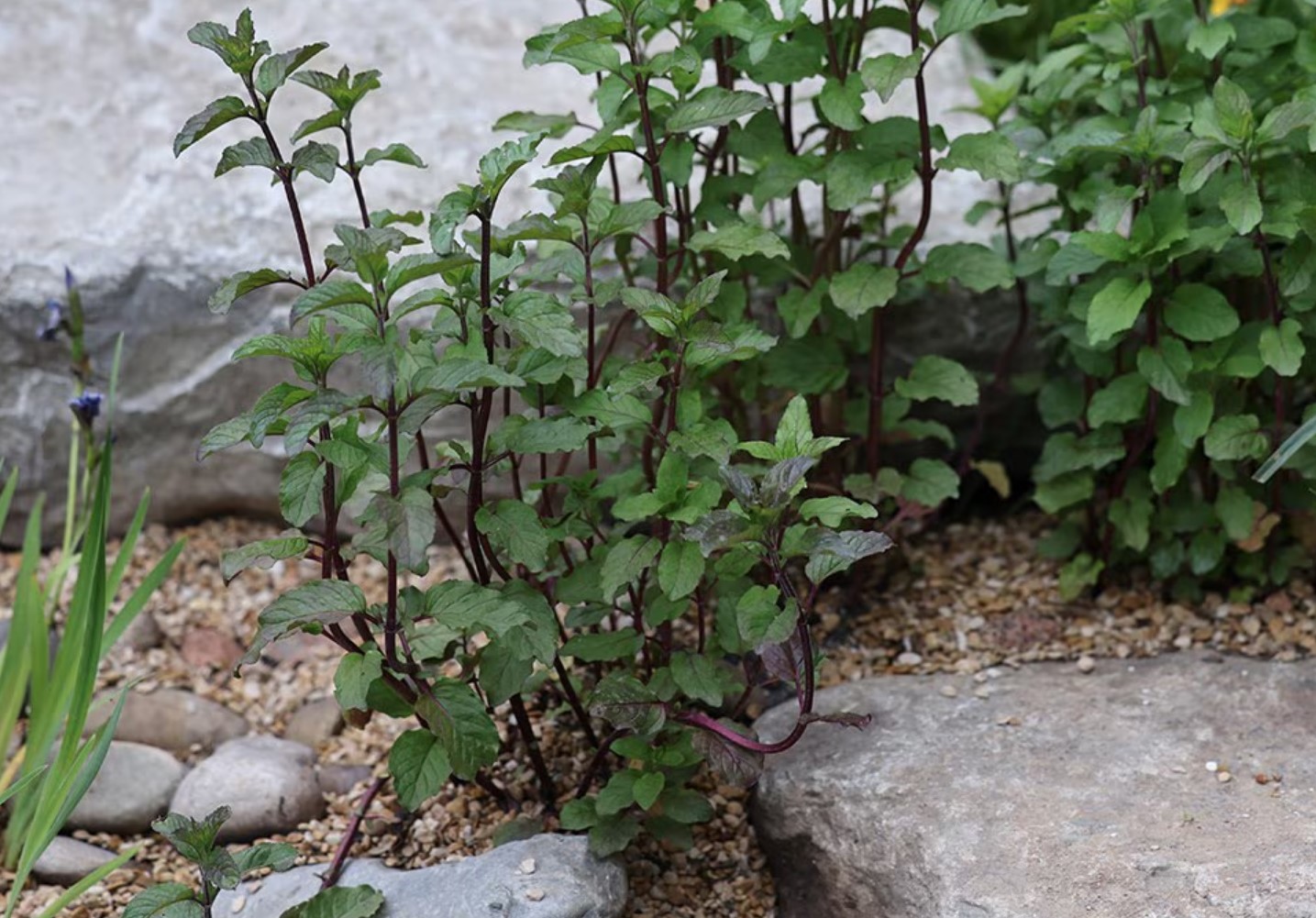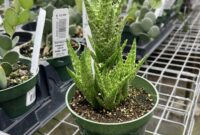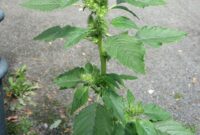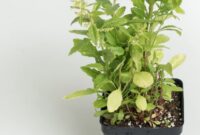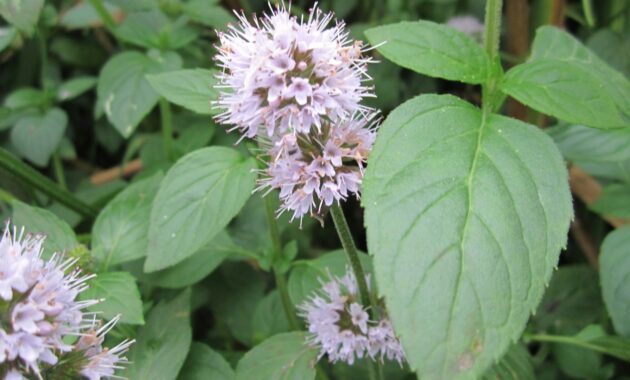
Mentha aquatica, commonly known as water mint, is a delightful aquatic herb with a refreshing, minty aroma. This versatile plant has been used for centuries for its culinary, medicinal, and ornamental properties. In this article, we will delve into the world of water mint, exploring its characteristics, cultivation, and numerous benefits.
What is Mentha aquatica?
Mentha aquatica is a perennial herb that thrives in moist, aquatic environments. It is characterized by its vibrant green leaves, which are often tinged with purple. The plant produces spikes of small, pink or purple flowers that attract pollinators. Water mint is a vigorous grower, spreading rapidly through its rhizomes.
Growing Mentha aquatica
Growing water mint is relatively easy, provided you can offer it the right conditions. Here’s a simple guide to cultivating this refreshing herb:
1.Choose the Right Location:
- Water mint thrives in full sun or partial shade.
- Select a location with moist, well-draining soil near a water source, such as a pond or stream.
2.Prepare the Soil:
- Water mint prefers rich, organic soil.
- Incorporate compost or well-rotted manure into the soil before planting.
3.Planting:
- Plant water mint rhizomes or cuttings in spring or early summer.
- Space the plants about 12 inches apart.
- Cover the rhizomes or cuttings with a thin layer of soil.
4.Watering:
- Water mint requires consistent moisture.
- Keep the soil consistently moist, but avoid waterlogging.
- Regular watering is essential, especially during dry periods.
5.Maintenance:
- Water mint is a low-maintenance plant.
- Remove spent flowers to encourage continuous blooming.
- Monitor for pests and diseases, and treat as needed.
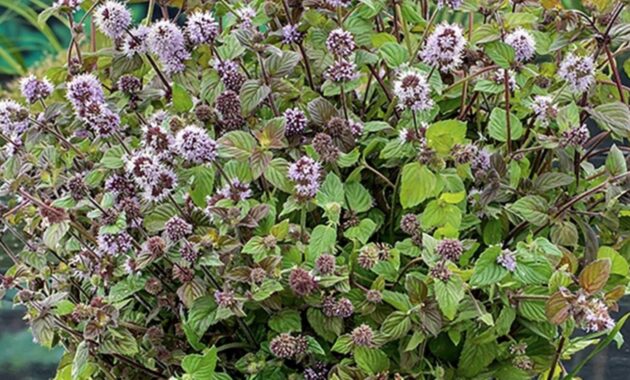
Mentha aquatica Propagation
Water mint can be easily propagated through various methods:
- Rhizome Division: Divide mature plants in spring or fall.
- Stem Cuttings: Take stem cuttings in spring or summer and root them in water or moist soil.
Mentha aquatica Benefits
Water mint offers a wide range of benefits, both culinary and medicinal:
- Culinary Uses:
- Add fresh or dried leaves to salads, soups, stews, and sauces.
- Infuse water or tea with water mint leaves for a refreshing beverage.
- Use water mint to flavor desserts, cocktails, and ice cream.
- Medicinal Properties:
- Water mint has been used to soothe digestive issues, such as bloating and indigestion.
- It may help relieve headaches and migraines.
- Water mint can be used as a natural remedy for respiratory ailments, including coughs and colds.
- The plant’s essential oil has antimicrobial and antifungal properties.
Mentha aquatica Habitat
Water mint is native to Europe, Asia, and North Africa. It thrives in moist, marshy areas, such as ponds, streams, and ditches.
Mentha aquatica Identification
Water mint can be identified by its:
- Opposite, toothed leaves
- Square stems
- Spikes of small, pink or purple flowers
- Strong, minty aroma
Mentha aquatica vs. Peppermint
While water mint and peppermint share similarities, they are distinct species. Water mint has a more pronounced aquatic nature and a slightly different flavor profile compared to peppermint.
Mentha aquatica Edible Uses
Water mint can be used in various culinary applications:
- Herbs: Add fresh leaves to salads, soups, and stews.
- Tea: Infuse leaves in hot water for a refreshing and soothing beverage.
- Cocktails: Use as a garnish or flavoring in cocktails.
- Desserts: Add to ice cream, sorbets, and fruit salads.
Water Mint Medicinal Benefits
Water mint has been used in traditional medicine for centuries. It is believed to have the following medicinal properties:
- Digestive Aid: Soothes indigestion and bloating.
- Pain Relief: Alleviates headaches and migraines.
- Respiratory Health: Relieves coughs and colds.
- Antimicrobial: Fights bacteria and fungi.
How to Grow Mentha aquatica
Follow these steps to successfully grow water mint:
- Choose a Location: Select a sunny or partially shaded spot with moist soil.
- Prepare the Soil: Improve soil drainage if necessary and incorporate organic matter.
- Planting: Plant rhizomes or cuttings in spring or summer.
- Watering: Keep the soil consistently moist, but avoid waterlogging.
- Maintenance: Remove spent flowers and monitor for pests and diseases
Water Mint Plant in Ponds
Water mint is a popular choice for adding beauty and fragrance to ponds. Its lush, green foliage and vibrant flowers create a stunning visual appeal. When planted in ponds, water mint can help to:
- Improve Water Quality: Water mint can help to filter out pollutants and excess nutrients from the water.
- Provide Habitat for Wildlife: The plant’s dense foliage provides shelter and food for various aquatic creatures, such as insects and small fish.
- Control Algae Growth: Water mint can help to reduce algae growth by competing for nutrients and sunlight.
Mentha aquatica Water Requirements
As the name suggests, water mint thrives in moist environments. It requires consistent moisture to flourish. Here are some tips for maintaining optimal water levels:
- Container Gardening: Water mint can be grown in containers, but it’s crucial to keep the soil consistently moist.
- Pond Planting: Plant water mint in shallow areas of the pond where the water depth is between 6 and 12 inches.
- Watering: During dry periods, provide additional water to keep the soil moist.
Mentha aquatica Environmental Benefits
Water mint offers several environmental benefits:
- Pollinator Attraction: The plant’s flowers attract bees, butterflies, and other pollinators, contributing to biodiversity.
- Erosion Control: Water mint can help to stabilize soil and prevent erosion along water bodies.
- Air Purification: The plant can help to purify the air by absorbing pollutants.
Water Mint Culinary Uses
Water mint is a versatile herb with a wide range of culinary applications:
- Flavoring: Add fresh or dried leaves to salads, soups, stews, and sauces.
- Infusion: Infuse water or tea with water mint leaves for a refreshing beverage.
- Cocktails: Use as a garnish or flavoring in cocktails.
- Desserts: Add to ice cream, sorbets, and fruit salads.
Where to Plant Mentha aquatica
When choosing a location for your water mint, consider the following:
- Sunlight: Water mint thrives in full sun or partial shade.
- Soil Moisture: The plant requires consistently moist soil.
- Space: Water mint can spread rapidly, so be mindful of its growth habit.
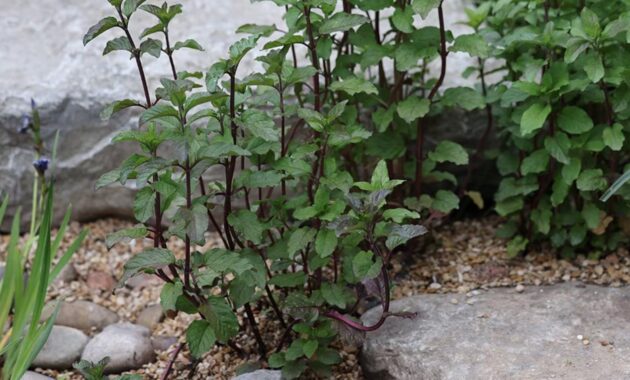
Conclusion
Mentha aquatica, or water mint, is a delightful herb with a myriad of uses. Its versatility, beauty, and numerous benefits make it a valuable addition to any garden or pond. Whether you’re using it to enhance your culinary creations, promote wellness, or beautify your outdoor space, water mint is sure to bring joy and freshness to your life.
FAQs
- Can I grow water mint indoors?
Yes, water mint can be grown indoors in a pot, but it will require consistent moisture and bright, indirect light. - How often should I harvest water mint?
You can harvest water mint leaves as needed. To encourage continuous growth, harvest the leaves in the morning and avoid removing more than one-third of the plant at a time. - Is water mint invasive?
Water mint can be invasive in some areas, so it’s important to monitor its growth and control its spread. - Can I use water mint to repel pests?
Yes, water mint can be used to repel pests such as mosquitoes and flies. You can plant it near outdoor seating areas or use essential oil extracted from the plant. - Can I use water mint to make herbal tea?
Yes, water mint can be used to make a refreshing herbal tea. Simply steep a few fresh or dried leaves in hot water for a few minutes.
